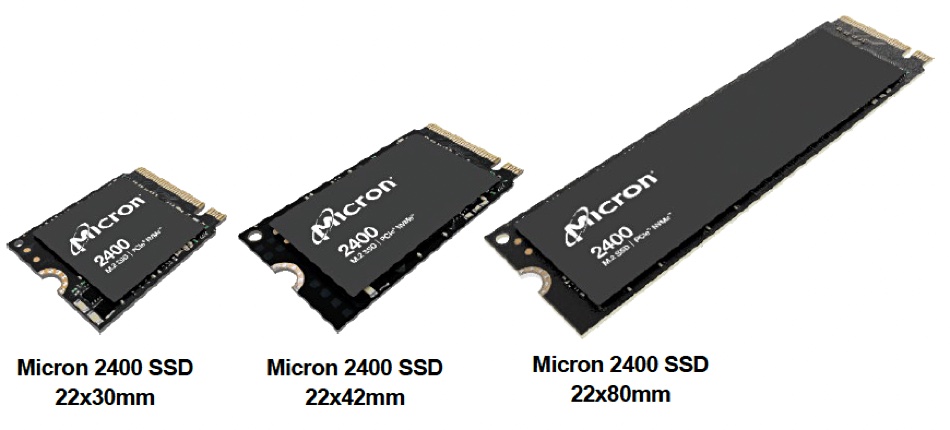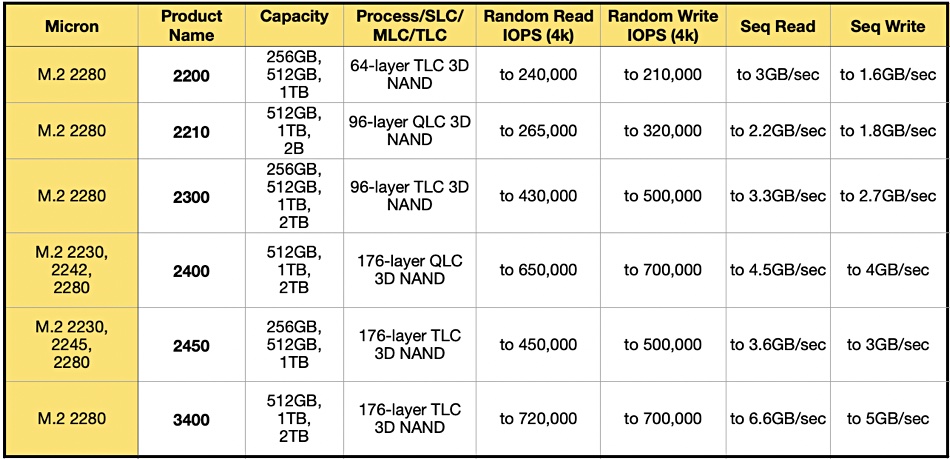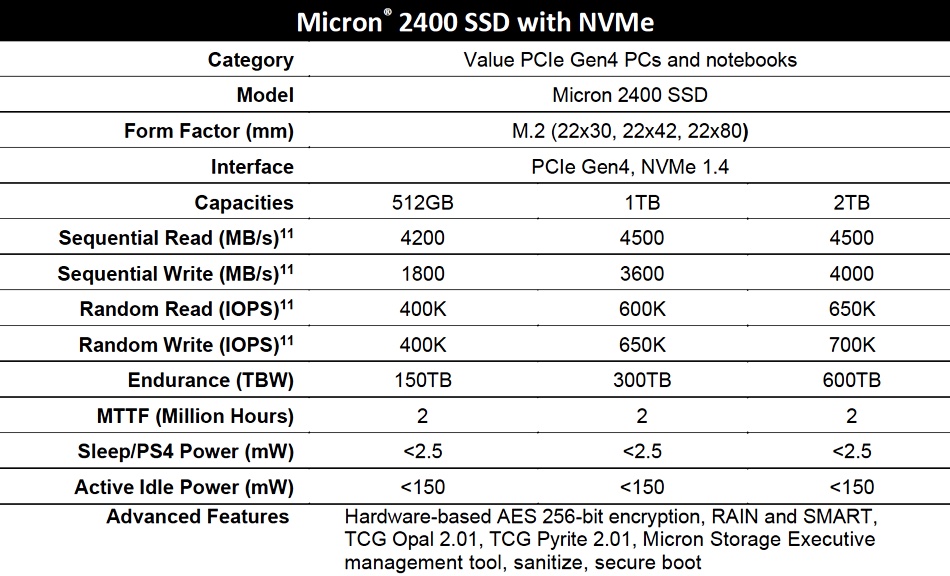Micron has announced the 2400 — a 2TB gumstick-sized PCIe 4 SSD using 176 layer 3D NAND formatted with QLC (4bits/cell), doubling the performance of the prior 2210 96-layer QLC product
Both products have an NVMe interface and are for PCs and notebook systems, including small and thin laptop designs. Micron says the 2400 is the world’s first 176-layer QLC NAND SSD and it uses charge trap technology with a CMOS-under-array design.
Jeremy Werner, corporate VP and GM of Micron’s Storage Business Unit, said in the release that the company expects “the new 2400 PCIe 4 SSD will significantly accelerate the adoption of QLC in client devices as it enables broader design options and more affordable capacity”.
The 2400 is available in three single-sided M.2 formats — 2230, 2242 and 2280 — with three capacity options in each case: 512GB, 1TB and 2TB. There must be a lot of empty space in the 2280 product as this picture indicates:

Micron competitor SK hynix also has a 176-layer 2TB M.2 SSD — its 2280 Platinum P41 drive for gamers. It was announced earlier this month, though SK hynix did not reveal the cell format. We suspect it was TLC (3bits/cell) as it has much higher performance than the 2400.
The 2400 has no on-board DRAM, utilising a host memory buffer instead. Like the 2100 it has an SLC cache-based dynamic write acceleration feature. Other features include hardware-based AES 256-bit encryption, RAIN and SMART, TCG Opal 2.01, TCG Pyrite 2.01, Micron Storage Executive management tool, sanitise erase and secure boot.
We have tabulated the details of Micron’s PCIe 4 M.2 format SSDs for comparison:

Micron says the 2400 has 33 per cent higher I/O speed (ONFI 4.x — 1600MT/s vs 1200MT/s) and 24 per cent lower read latency than the 96-layer QLC NAND used in the 2100. It does not provide an actual latency number. The table above shows that the 2400 is more than twice as fast as the 2100 in terms of random read/write IOPS and sequential read and write performance.
However its endurance is less. This is expressed in terabytes written (TBW) terms, and the 2100 provided 180TBW at the 512GB capacity point, 360TBW at 1TB and 720TBW at 2TB. The equivalent 2400 ratings are: 512GB — 150TBW; 1TB — 300TBW; and 2TB — 600TBW. This lower endurance may be a concern in high write workload environments — think of the 2400 as a boot and mixed read/write device.
Its active idle power has been reduced by half from the 2100. Micron said it is designed to meet Intel Project Athena requirements for more than nine hours of real-world battery life on laptops when using high-definition displays. The power draw is listed in a 2400 product brief table:

According to its product brief the 2100’s active idle power is <400mW — considerably higher. Its active read power is <4,000mW but Micron doesn’t provide an equivalent number for the 2400.
The 2400 will be incorporated into some Micron Crucial consumer SSDs, and available as a component for system designers.








